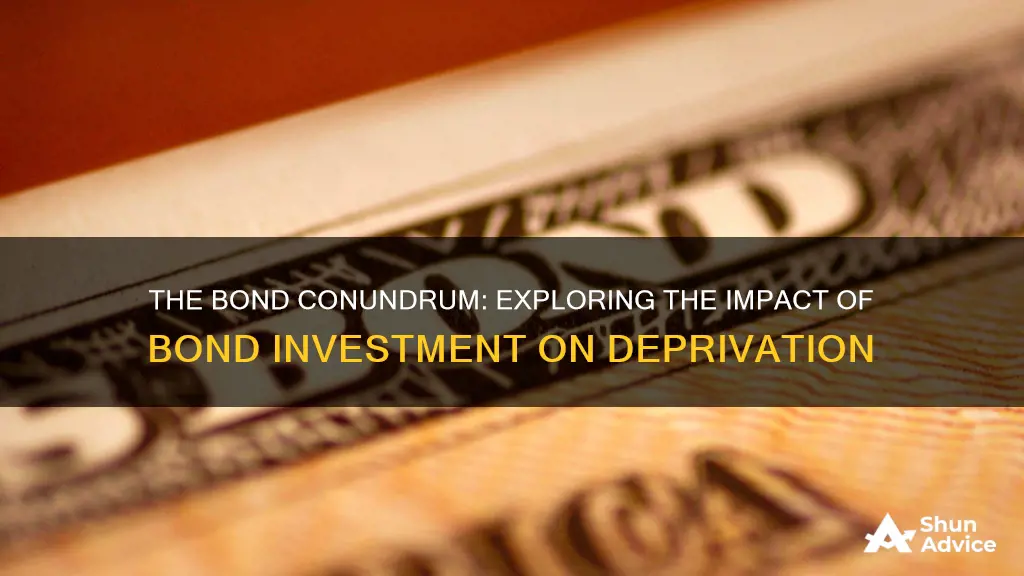
Buying bonds can be a good way to diversify an investment portfolio, but it also has its drawbacks. Bonds are a form of IOU, where investors lend money to a company or government in exchange for interest. They are considered a safer investment than stocks, but they can also deprive investors of extra income when interest rates rise. Bonds are generally considered a good way to preserve capital, but they can also carry risks such as interest rate risk, credit risk, and liquidity risk. Ultimately, the decision to invest in bonds depends on an investor's unique circumstances and risk tolerance.
| Characteristics | Values |
|---|---|
| Interest rate | When interest rates rise, bond prices fall, and vice versa. |
| Income | Bonds provide a fixed amount of income at regular intervals in the form of coupon payments. |
| Risk | Bonds are considered less risky than stocks. |
| Diversification | Bonds can help diversify your portfolio. |
| Tax | Some bonds are tax-exempt. |
| Maturity | Bonds have different maturity lengths: short-term, medium-term, and long-term. |
| Coupon rate | The coupon rate is the interest rate the bond issuer will pay on the face value of the bond. |
| Credit rating | Bonds are rated by credit agencies to help determine the quality of those bonds. |
What You'll Learn

Bond prices are inversely correlated with interest rates
Bonds are a type of loan made by an investor, often to a company or government agency. In return, the investor receives fixed-rate interest income, usually semi-annually, which remains unchanged despite market interest rate fluctuations.
Bonds have an inverse relationship with interest rates. When interest rates increase, bond prices tend to fall, and vice versa. This negative correlation may seem counterintuitive, but it makes sense when considering the relative attractiveness of new bonds issued after a change in interest rates.
Most bonds pay a fixed interest rate. When interest rates fall, existing bonds become more attractive, driving up demand and increasing their market value. Conversely, if interest rates rise, investors will favour new bonds with higher interest rates, causing a decline in the price of existing bonds until their yield matches that of the newer bonds.
For example, consider a zero-coupon bond trading at $950 with a par value of $1,000 (paid at maturity in one year). The bond's rate of return is 5.26%. If current interest rates rise, newly issued bonds may offer a higher yield, making the existing bond less appealing. To attract demand, the price of the pre-existing bond would have to decrease to match the return offered by the newer bonds.
The sensitivity of a bond's price to changes in interest rates is known as its "duration". Longer-term bonds are generally more sensitive to interest rate changes.
In summary, the inverse relationship between bond prices and interest rates is a crucial concept for investors to understand. It highlights how the price of existing bonds adjusts to remain competitive when new bonds are issued with different interest rates.
Luna: Invest or Avoid?
You may want to see also

Bond ladders deprive you of current income
A bond ladder is a portfolio of bonds with different maturities. The maturity dates are staggered so that each bond matures in consecutive years. This strategy is used to match income to an investor's financial needs.
However, one of the drawbacks of bond ladders is that they deprive investors of current income. When you put your money into individual bonds, it pays you a fixed-rate income. So, when rates in the marketplace go up, your income will remain the same. On the other hand, in a bond mutual fund, the managers will be adding higher-rate bonds to the pool, increasing your interest income.
For example, let's say you invest $80,000 in an individual bond to mature in the first year of your ladder, but you invest the same amount in a bond mutual fund to mature in the second year. If market conditions worsen and interest rates go up, at the end of the first year, you are guaranteed your $80,000 plus interest. However, at the end of the second year, since the bond market moved against you, your bond fund might be worth less than your original investment.
Therefore, while a bond ladder provides a predictable income stream, it does deprive you of the opportunity to benefit from rising interest rates.
Invest in Wells Fargo: Now or Never?
You may want to see also

Bond ladders carry more default risk
Bond ladders, or portfolios of bonds with staggered maturity dates, are a popular investment strategy for those seeking stable income and lower fees. However, one of the drawbacks of this strategy is that it carries a higher default risk compared to other investment options.
A bond ladder typically consists of a series of bonds with different maturity dates, ranging from one to twenty years. This strategy is designed to minimise interest-rate risk, increase liquidity, and diversify credit risk. By having bonds with varying maturity dates, investors can reinvest proceeds at regular intervals and take advantage of the current interest rate environment.
However, one of the main risks associated with bond ladders is default risk. Default risk refers to the possibility of the bond issuer being unable to repay their debt. In the context of a bond ladder, if one of the bonds defaults, it can significantly impact the overall portfolio. This is especially true for individual investors who typically hold a smaller number of bonds, such as ten or twenty. A single default within this small portfolio can have a substantial negative impact.
To mitigate this risk, it is crucial to build a bond ladder with high-quality bonds and ensure ample diversification across bond issuers. Additionally, investors can consider working with a professional investment manager who specialises in bond portfolios. These managers can assess the credit quality of bond issuers and monitor their creditworthiness over time, reducing the likelihood of default.
While bond ladders offer several benefits, investors should carefully consider the risks involved, including the higher default risk associated with this investment strategy.
Cash Conundrum: The Great Homebuying Debate
You may want to see also

Bond prices fluctuate based on interest rates
The prices of bonds in the market are influenced by several factors, including interest rates, which have an inverse relationship with bond prices. When interest rates increase, bond prices tend to fall, and when interest rates decrease, bond prices tend to rise. This relationship can be counterintuitive, but it becomes clearer when considering the relative attractiveness of new bonds issued at the updated interest rates compared to existing bonds with fixed interest rates.
How Interest Rates Affect Bond Prices
The movement of bond prices in response to changing interest rates is driven by the concept of bond yield, which is the return or income generated by a bond investment. The yield of a bond is influenced by its coupon rate, or the fixed interest rate, and the market interest rate at the time of issuance. When interest rates change, the yield of existing bonds becomes more or less attractive compared to the yield of newly issued bonds.
For example, if interest rates increase, investors will be less inclined to purchase existing bonds with lower fixed coupon rates. As a result, the prices of these bonds will decrease until their yield matches that of the newly issued bonds. Conversely, if interest rates decrease, the existing bonds with higher fixed coupon rates become more attractive, leading to an increase in their market price.
Factors Influencing Bond Prices
While interest rates are a significant factor in determining bond prices, other elements also come into play. The credit rating of a bond, assessed by independent agencies like Moody's, Standard & Poor's, and Fitch, plays a crucial role. Bonds with higher risk and lower credit ratings tend to have higher yields but lower prices. Additionally, the maturity date of a bond impacts its price. Bonds with longer maturities generally require a higher discount rate to account for the increased risk over a more extended period.
Bond Prices and Investment Strategies
The inverse relationship between interest rates and bond prices has implications for investment strategies. When interest rates are high, purchasing bonds can be advantageous as they offer higher yields. However, even when interest rates are low, bonds can still be a valuable component of a diversified investment portfolio.
In summary, bond prices and interest rates are closely linked, with interest rates being a key driver of bond price fluctuations in the market. Understanding this dynamic is essential for investors when making decisions about buying, selling, or holding bonds.
Retirement Planning: 401(k) Investors Count
You may want to see also

Bond funds usually include higher management fees and commissions
Bond funds are mutual funds or exchange-traded funds (ETFs) that invest in a variety of bonds, such as corporate, municipal, government, or junk bonds. They are an alternative to buying individual bonds, as they provide greater portfolio diversification than an individual investor could manage independently.
One of the main advantages of bond funds is that they are managed by professionals who have the expertise to research and analyse the creditworthiness of bond issuers and market conditions. These professionals make investment decisions based on individual security analysis, sector allocation, and yield curve evaluation.
However, bond funds usually include higher management fees and commissions than investing in individual bonds. When investing in bond funds, it is important to keep in mind that the income may fluctuate, as these funds typically invest in more than one type of bond. Additionally, investors may be charged a redemption fee if they sell their shares within a certain time frame, typically between 60 to 90 days.
It is also worth noting that bond funds that are leveraged, or invest in riskier bonds, have a greater risk of default. These funds offer higher returns but come with a higher risk of losing your investment. When considering a bond fund investment, it is crucial to carefully read the prospectus to understand the fees and the specific types of bonds included in the fund.
Investing in People: A Guide
You may want to see also
Frequently asked questions
Yes, individual bonds deprive you of extra income when interest rates go up.
Other risks of individual bonds include exposing you to default risk, leaving you unprepared for emergencies, and being expensive.
Bonds offer a host of advantages, including capital preservation, income generation, diversification, and risk management.
As with any investment, buying bonds also entails risks, including interest rate risk, inflation risk, credit risk, and liquidity risk.







